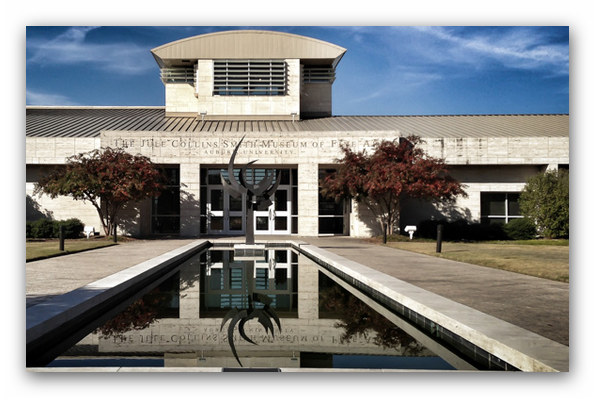Sep 5 2017 - Jan 7 2018
Jule Collins Smith Museum of Fine Art
Auburn, AL
During the summer of 2017, the museum was closed to the public as we undertook an extensive renovation of the art storage vault to better accommodate our expanding collections. Needless to say, “space,” or more specifically its organization, its characteristics, and until now our lack of ample space, has weighed heavily on the museum staff’s collective mind and efforts. Objects occupy space. Art objects are no exception, and when not on display in a gallery they require a safe and accessible place of accommodation. As the Shaker saying famously states, “A place for everything, and everything in its place.” Our prolonged consideration of space and place has provided the inspiration for this exhibition on the occasion of our reopening.
While paintings and other pictorial media often deal with space in an illusionistic way, it is sculpture that concerns itself fundamentally with material volume, or the palpable occupancy of physical space. We measure such objects along three axes: height, depth, and width. The present exhibition features work from JCSM’s permanent collection created by “conventional” sculptors, such as Raoul Hague’s abstract figure evocative of human forms, hewn from a massive trunk of labor-resistant hardwood. Hague shares gallery space here with more naturalistic figurations by sculptors Curt LaCross and Kyungmin Park modelled in easily pliable clay, which responds immediately to the artists’ slightest touch. Roger Brown, primarily known for his painting and printmaking, is represented by works in both mediums––and sculpture. In each case, he elevates the mundane to a matter of pseudo-serious import.
The exhibition also presents non-conventional approaches that question our customary distinctions between 2-D and 3-D designations, or even the requirement of physical matter to constitute what can be termed “sculpture.” In the former instance, consider the work of Jiha Moon, whose flat version of Take Out bears 2-D renderings meant to represent three-dimensional objects. The same template can be folded and joined to form an actual 3-D object, with a result of constraining the identical, printed imagery as flat surface decoration. Rick Silva creates ethereal virtual realities built upon computer algorithms and so-called “3-D” animation software. His invented birds of a parallel future inhabit an environment unreachable by our sense of touch, yet their actions in the fourth dimension––time––animate the digital creations into a fully believable existence. Sandy Skoglund creates elaborate sculptural installations with the ultimate purpose of providing compositions for her oversized photographs. Dale Kennington’s painted screen discloses its narrative subject slowly and in fragments, only as a viewer walks a circuit around its corrugated surface. Sergei Isupov creates voluptuous sculptural forms that simultaneously support and subvert his exquisitely painted ornamentation. Finally, in an embodiment of the collecting museum’s dilemma, Sangbin IM conjures a fantastical vision of curatorial ambition pushed quite out of bounds. Such a salon of impossible proportion could only exist in one’s imagination or as a product of computer-enhanced reality, illustrating that even for the most well-endowed institution, it still comes down to a matter of space.
Credit: Exhibition overview from museum website
Exhibition Venues & Dates
Sep 5 2017 - Jan 7 2018
Jule Collins Smith Museum of Fine Art
Auburn, AL
